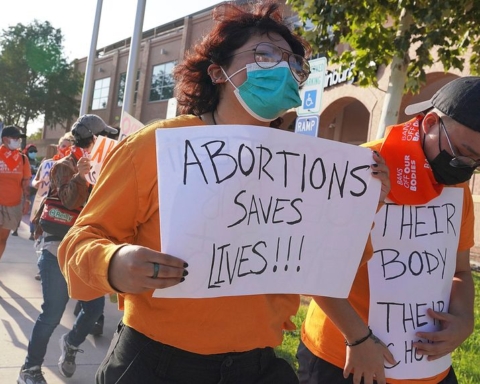As people all across the world are falling ill to COVID-19, we are seeing staggering amounts of unemployment numbers rising in the United States due to businesses following strict government orders for health safety.
In the past week, 3.3 million Americans have filed for unemployment benefits following the loss of jobs created by governmental safety procedures brought on by the coronavirus pandemic that is sweeping the country. The nation’s unemployment rate for February 2020 was 3.5% and is projected to reach at least 3.9% for the month of March, signifying the likelihood of an imminent recession. Unemployment has not been reported this high since 1967 during the Vietnam War and the possibility of the current numbers on a decrease in the next month may be impossible while businesses remain with doors closed. The United States is now leading the world in cases of confirmed coronavirus patients and the numbers continue to increase as we have only just begun to enforce measures of safe social distancing and health precautions.
Despite the President’s latest efforts to encourage businesses to reopen soon, public health professionals are continuing to urge extreme health precautions and public social distancing in attempts to “flatten the curve” which means that people should not return to the workforce until public environments are deemed safe. Many schools have also announced they will not be reopening for the current school year which leaves children home with families, potentially adding to the financial burden of putting food on the table for every meal.
On Friday, March 27th, Trump signed the largest bipartisan stimulus package in U.S. history to provide aid to the economic threats created by the coronavirus pandemic. The $2 trillion stimulus will act as a safety net for taxpaying individuals, businesses, corporations, state, local, and tribal governments, the National Guard and more with the aim to protect citizens from the COVID-19 financial disaster. The bill will provide a one-time full amount payment of $1,200 for single individuals that are not listed as a dependent who have an adjusted gross income of $75,000. An additional amount of up to $600 per week will also be provided on top of unemployment insurance benefits based on eligibility. The stimulus payment will be disbursed within the next three weeks either directly to your bank account provided in tax information or as a check according to U.S. Treasury Secretary Steven Mnuchin.
Some of the highlighted information regarding the stimulus has been shared but you can also look on the website for a more in-depth breakdown.
https://www.ncsl.org/ncsl-in-dc/publications-and-resources/coronavirus-stimulus-bill-states.aspx
Overview
The Coronavirus Aid, Relief, and Economic Security Act (CARES) provides an estimated $2 trillion stimulus package to battle the harmful effects of the COVID-19 pandemic. A few highlights of what’s included in the package:
- Creates a $150 billion Coronavirus Relief Fund for state, local and tribal governments.
- $30 billion for an Education Stabilization Fund for states, school districts and institutions of higher education for costs related to the coronavirus.
- $45 billion for the Disaster Relief Fund for the immediate needs of state, local, tribal and territorial governments to protect citizens and help them respond and recover from the overwhelming effects of COVID-19.
- $1.4 billion for deployments of the National Guard. This level of funding will sustain up to 20,000 members of the National Guard, under the direction of the governors of each state, for the next six months in order to support state and local response efforts.
- An additional $4.3 billion, thorough the Centers for Disease Control and Prevention, to support federal, state and local public health agencies to prevent, prepare for and respond to the coronavirus.
- Requires the Department of Homeland Security to extend the Real ID deadline for full implementation by states from Oct. 1, 2020, to no earlier than Sept. 30, 2021. DHS subsequently announced that the new deadline would be Oct. 1, 2021.
- $25 billion for transit systems. These funds would be distributed through existing formulas including the Urbanized Area Formula Grants, Formula Grants for Rural Areas, State of Good Repair Formula Grants and Growing and High-Density States Formula Grants using the fiscal year 2020 apportionment formulas.
- $400 million in election security grants to prevent, prepare for, and respond to coronavirus in the 2020 federal election cycle. States must provide an accounting to the Election Assistance Commission of how the funds were spent within 20 days of any 2020 election.
- Expands unemployment insurance from three to four months, and provides temporary unemployment compensation of $600 per week, which is in addition to and the same time as regular state and federal UI benefits.
- Establishes a $500 billion lending fund for businesses, cities, and states.
- Provides a $1,200 direct payment to many Americans and $500 for each dependent child.
The times that lie ahead of us are sure to be trying for many Americans, however, we must remain calm and vigilant in efforts to stay safe and healthy. Remember the supportive communities we create for one another and that we are all affected by this pandemic and that each person is a vital member of the world we live in.
Please feel free to reach out in the comments for any further questions or support. WE LOVE YOU!
Amelia Davis






